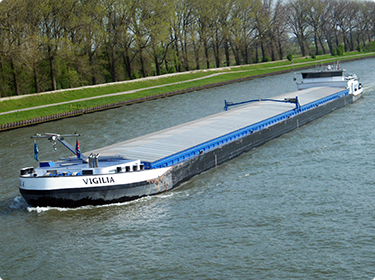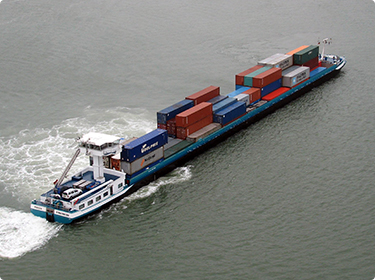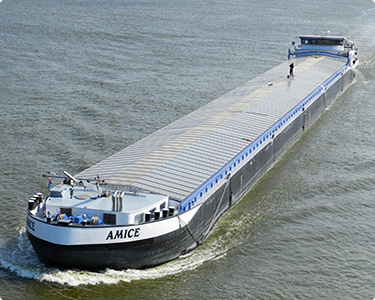Ships
On this page you will find a complete overview of our ships / vessels which are currently active in inland navigation shipping, complete with comprehensive details of every ship including length, width, draft and tonagge.
Vigilia ship / vessel details

Vigilia - inland navigation cargo
- Length: 135 meter
- Width: 11,45 meter
- Draft: 359 centimeter
- Tonnage: 3938 tons
- Year: 2008
- Main engine: 2x 1065 hp Caterpillar
- Thruster: 2x 485 hp Caterpillar
- Purchased in: self phased in 2008
- Specifics:
- - 4800 cubic meters under the harches
- - 264 TEU containers on 4 layers
Vigilia II ship / vessel details

Vigilia II - inland navigation cargo
- Length: 135 meter
- Width: 11,45 meter
- Draft: 361 centimeter
- Tonnage: 3935 tons
- Year: 2003
- Main engine: 2x 1380 hp Caterpillar
- Thruster: 2x 530 hp Caterpillar
- Purchased in: 2006
- Specifics:
- - 5300 cubic meters under the harches
- - 268 TEU containers on 4 layers
Amice ship / vessel details

Amice - inland navigation cargo
- Length: 135 meter
- Width: 11,45 meter
- Draft: 359 centimeter
- Tonnage: 3938 tons
- Year: 2008
- Main engine: 2x 1065 hp Caterpillar
- Thruster: 2x 485 hp Caterpillar
- Purchased in: self phased in 2008
- Specifics:
- Sister ship of Vigilia, owned by van Gent Scheepvaartbedrijf. This is the company of Xander and Kees van Gent, brother and father.

